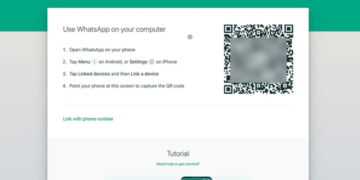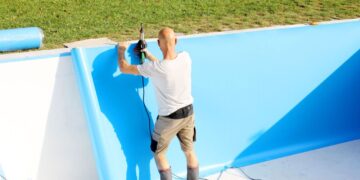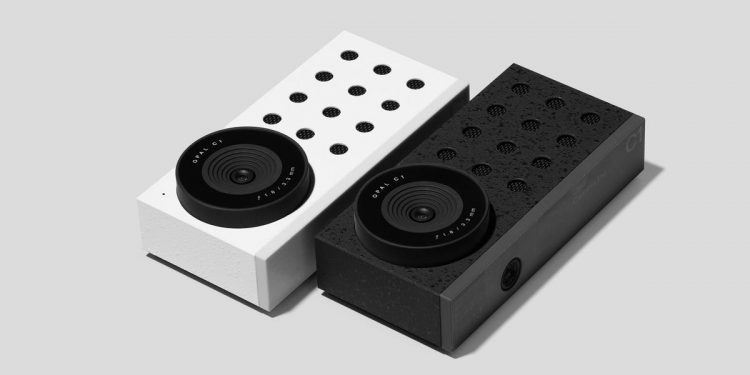Before Covid-19 moved work from the office to our bedrooms, living rooms, or even an Airbnb in Costa Rica, there was a set of standards for how one should present themselves in a professional setting.
The emphasis was primarily placed on looking put together and having a confident handshake. But now that we can only see our coworkers as little squares on a screen, what does it look like for someone to act professionally? It’s possible that in this day and age of Zoom, looking professional has less to do with khakis and more to do with cameras.
Despite this, the vast majority of webcams use antiquated hardware that produces images of poor quality. We live in a world where every digital image of ourselves that we present to the world has been altered in some way before being done so. The photographs that we take on vacation and share with our friends via Instagram always turn out beautifully.
When we log onto Zoom for our professional lives, however, we are typically forced to use webcams of subpar quality. This is unless we are willing to spend thousands of dollars on a professional studio setup that includes a DSLR camera and a podcast microphone.
Opal C1 is available in both black and white.
Opal, a brand-new hardware startup, has just introduced its first product, the Opal C1, to address this issue. They plan to sell cameras and microphones that are comparable to those used in recording studios at a fraction of the cost. The Opal C1 comes equipped with the following components:
4K videos, a collection of mics that filter out background noise and improve clarity, bokeh depth of field effect, which makes your video look like it was shot on a high-quality DSLR, machine learning to zoom in on your face and follow you within the frame, and manual controls to fine-tune your camera like a DSLR are some of the features that are included in this camera.
All of this is crammed into a piece of hardware that is streamlined and reminiscent of Dieter Rams, an influential product designer from the 1960s. The C1 satisfies the requirements of the Rams’ ninth principle and can be considered sustainable. It is intended to have a long lifespan and to be recyclable once that lifespan has come to an end.
The box itself is 100% recyclable, and it does not contain any of the polyurethanes that are typically found in packaging materials. In addition, there is less than one percent plastic in the camera, and the vast majority of it is recyclable.
Nevertheless, the real action takes place on the inside. The Opal C1 is not just a peripheral device like most other webcams; rather, it contains computing power within the camera itself, which is what sets it apart from the majority of other webcams. The ability to process images in real-time on your device in order to optimize a given photo is responsible for a significant portion of the improvements in image quality that have been noticed on the iPhone in the past few years.
Opal is able to use similar machine learning and computer vision processing on the camera thanks to the Intel MyriadX chip. This processing is being done in order to optimize the quality of the video. Everything from editing to auto-focus is made silky smooth by Intel’s new 14-nanometer VPU chip, which also enables new features like a depth-based bokeh effect.
After using the Opal C1 for a few days, I have a favorable impression of it. compared to the high-end 4K Logitech Brio that I had been using prior to this, which cost me $200. The configuration of the Opal is much simpler. The software was easy to download, install, and use, in contrast to the Logitech software, which I am still unable to fully understand after using it for over a year.
In contrast to the Logitech Brio, the installation process for the Opal was as simple as plugging in and starting up. In comparison to the Logitech Brio, Opal’s image quality and granularity of control are significantly more impressive. Even though the Opal costs an additional $300, I would say that the overall quality is at least one hundred percent higher, and the experience will only get better.
In general, the Opal C1 is probably ninety percent as good as a DSLR studio setup that costs $5,000, but it costs less than one-tenth of that amount and has a much simpler installation and operation process.
So, tell me, what exactly goes on behind the scenes?
Opal was established by Veeraj Chugh, who previously served as the head of product at both Uber and Jump; Stefan Sohlstrom, a designer and product manager who previously worked at Plaid, Otto, and Uber Freight; and Kenny Sweet, an industrial designer who previously worked for Beats and Google on the development of various products. The pandemic was the impetus for the formation of the team.
When the world was still coming to terms with the lockdown in March of 2020, Chugh said, “We collectively had this realization that like, wow, my webcam sucks. Why is it that I always have a DSLR camera in my pocket, but the thing that I actually spend seven hours a day working on doesn’t look very good? This is a tremendous opportunity, but nobody is taking advantage of it.
Read Also: Discover the World of Desktop Wallpapers: A Complete Guide
Both Veeraj Chugh and Stefan Sohlstrom contributed to this.
Therefore, the group began their work on the project after hours and on the weekends. As they investigated camera technology in greater depth, they came to the conclusion that the vast majority of webcams were based on antiquated hardware, and none of them had the computing power onboard to produce a video of studio quality.
Sohlstrom reflects, “What we’ve learned is that the hardware in modern cameras is anywhere from 25 to 40 percent of the overall quality.” The remainder of it consists of things like computational photography, computer vision, and machine learning, all of which significantly enhance the image.
They believed that by combining the skills of everyone on their team, they had a good chance of being successful in developing both the hardware and the software that was necessary to create a revolutionary camera. They started working on the hardware in January 2021, and they got started on the software in March of that same year.
They have received funding in the form of a Seed round from investors such as Hugo Barra, who was the progenitor of Facebook’s Metaverse vision, as well as Kindred Ventures, Seven Seven Six Ventures, and Offline Ventures. Other investors include Mike Krieger, who was a co-founder of Instagram; Chad Hurley, who was a co-founder of YouTube; Kevin Lin, who was a co-founder of Twitch; Hong Feng, who was a co-founder of Xiaomi; Emilie Choi, President at Coinbase; Jeremy Cai, CEO of Italic; Sahil Lavingia, cofounder of Gumroad; Liam Casey, founder and CEO of PCH International; Manik Gupta, SVP of Teams and Skype at Microsoft; Matt Mullenweg, cofounder and CEO of WordPress; and many more are among the great angels who have assisted us along the way.
The following month, in September, one of their investors, Alexis Ohanian, tweeted about the camera, which resulted in an overwhelming amount of interest. It didn’t take long for the story to shoot to the top of Hacker News, which ultimately caused the website to crash three times.
When the smoke cleared, there were 16,000 people on the waiting list for Opal C1. This week, they will be launching publicly, which means that they will begin allowing individuals who have been waiting on the waitlist to make purchases on a first come, first served basis. The software is currently in the beta stage, and it will undergo consistent and ongoing upgrades to improve the overall video and audio quality of the user’s experience.
Opal makes it simple to make video calls while maintaining a polished appearance and sound. This team’s primary goal is to create the best camera currently available on the market, and they intend to spend the next few months continually improving the product in order to increase the level of satisfaction experienced by customers. In the end, they are providing professionals with a digital identity that enables them to appear in their meetings in a professional manner in order to boost their confidence and improve their performance.















































